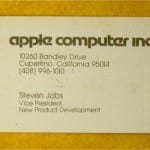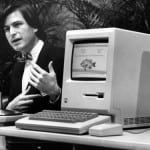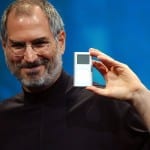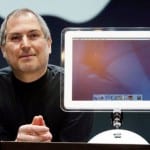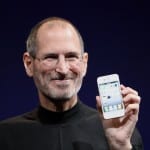
We are on a special date for the boys of Cupertino and it is the 40th anniversary of the life of which he was born on April 1, specifically on April 1, 1976. That day, Steve Jobs, Steve Wozniak and Ronald Wayne They approached the Santa Clara county registry office and created the company Apple Computer, Inc.In the division of the company the most benefited were the Stevens, who obtained 45% of the shares of the company and Wayne 10% . This society was left lame of a member since Wayne soon sold his shares to Jobs and Woz for 800 dollars, something that surely would not have made known the future of the company.
And this is how Apple started, like many other companies that register and have work projects in mind to grow and develop their businesses around the world. Apple is today one of the most important technology companies in the world and with an economic income within the reach of very few.
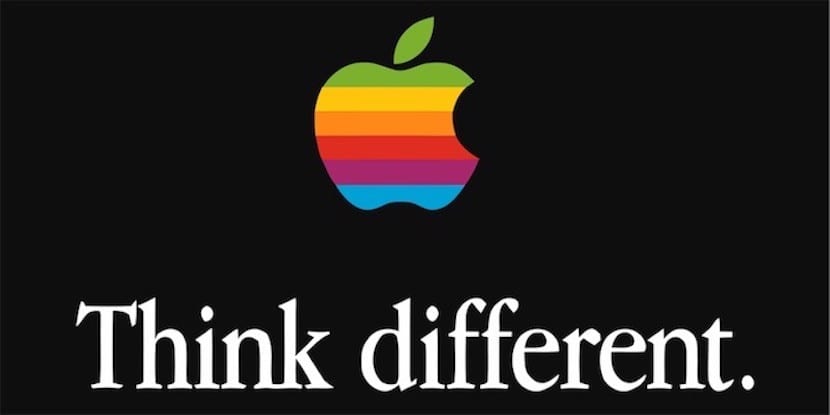
Following a bit the history of Apple we will say that it was a company (in its beginnings) somewhat rebellious and out of what society understood in the 70s. They were a little ahead in terms of established ideals and in the end everything would add up to make Apple what it is today even wearing the pirate flag in its offices during those first years.
The Apple I
This would be society's first serious computer after creating the "blue boxes" with which they called for free when they were younger, Jobs and Woz. The Apple I was a real breakthrough for the company that managed to sell 50 units of it in an electronics store in the city. From this first computer 200 units were made and to this day those that still work reach figures in collectors auctions.
The Apple of those years did not reap great successes until the Apple II computer arrived. To get these Apple IIs made, Jobs had to use all his ingenuity and convince a retired engineer to invest in the project. This engineer was Mike Markkula, who invested $ 170.000 and another $ 80.000 in shares of Apple Computer, Inc in order to start manufacturing this personal computer. On June 10, 1977, this successful Apple II was put on sale.
After Apple II
In order not to go into all the details that can be obtained from these 40 years of Apple, we are going to explain that after Apple II the company began to earn a lot of money (in 1980 Apple II sales totaled 180 million dollars) and the Wozniak's abandonment was a blow for the company despite the strength of Jobs to continue to lead the company.
That same year 1980, the company went public and its shares cost $ 22. In a short time the shares were sold out and Apple was starting to be a small company with big profits. The arrival of John Scully, former CEO of Pepsi, helped Apple grow until such time as sales of the Apple II stalled. Jobs's Apple was locked in advancing the Macintosh and Lisa, but the competition was tightening with their family computers and ultimately due to pressure from Apple's board of directors, Jobs was relegated from his position and was left out of Apple.
NeXT, iMac and the future of Apple
Once out of the company that he founded himself, Steve Jobs stuck to the NeXT project. Scully himself who had been hired by Jobs To help Apple grow, he was leaving the company. Jobs's time at NeXT gave Apple the foundations of the operating system we know today for our Macs.
After all, Jobs' plan was to regain power in Apple and he did it shortly after returning to Apple. The first iMac arrived in this second stage of Jobs at Apple and the first stone was added for the revival of the company that was increasingly affected in terms of the sales of its products. Mac OS X came from the hand of NeXTstep from NeXT and this was undoubtedly a renewed air for the company that would see sales grow again.
The iMac was consecrated and it has undoubtedly been key in the growth of the company during its beginnings until today. Macs continue to be a very important part of the company and this is sure to increase over the years. It should be noted that today computer sales worldwide continue to decline, but Macs continue to hold up despite everything.
iPod, iPhone, iPad
Today we can say that the most prominent product is the iPhone, but in its day what really revolutionized sales was the iPod. In 2007 and by the hand of Steve Jobs, came the iPod. A small device that would revolutionize the music market together with iTunes. Once the iPod was presented, there was one less step left for those from Cupertino to launch another product that would revolutionize the telephony industry, the iPhone.
The iPhone revolutionized the market and although it is true that right now we see the iPhone something normal, at the time it was something great to be able to interact with the finger on its screen. Then the iPhone 4 would come, which changed the design of those first iPhone 2G, iPhone 3G and 3GS radically, adding the metal frame on the sides and glass on the front and back. The model after that first iPhone 4 arrived in 2011 and with the sad news that Steve Jobs could not overcome his illness by dying after the presentation. The person in charge of piloting the ship was an old friend of Jobs, Tim Cook, who is still the head of the company today.
Yes, before leaving us forever Steve Jobs presented the iPad. The iPad was similar to an iPhone but without the calling function, something that many thought would not be successful in the market and that today is proven to be the opposite.
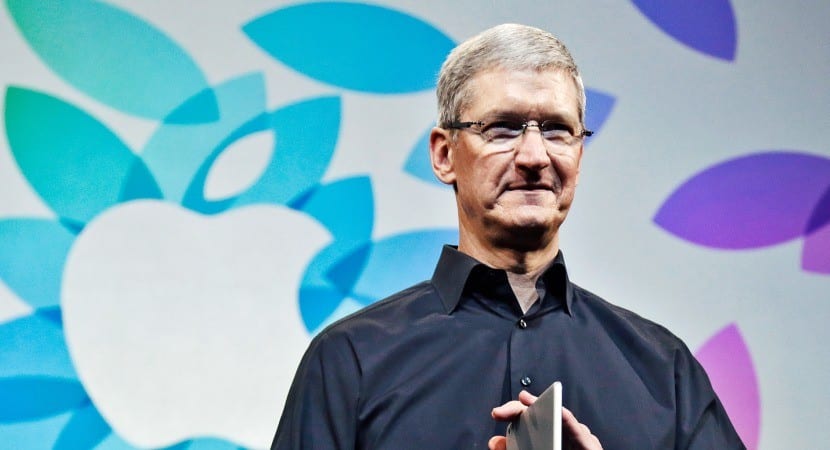
Congratulations Apple
I still have a lot to tell in this article, so forgive the most enthusiastic people in history, but it is not a plan to write a novel either ... Simply congratulate the company on this magnificent 40-year history and keep improving 40 more. On the other hand, it is also time to "stretch their ears a little" for the mistakes made more recently, which must also be said.
